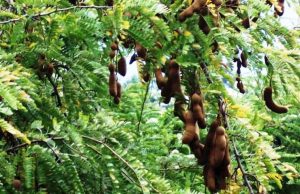Armed conflicts, refugees, famine, food shortages and malnutrition, harsh weather conditions and unpredictable rainfall. An overview of different crises in Africa.
Central African Republic (CAR)
After decades of strife and stalled development, CAR plunged into crisis in 2013. The Seleka coalition overthrew the president in a coup d’etat. In response, self-defence groups known as Anti-Balaka reorganised in late 2013 to challenge the Seleka.
The Anti-Balaka and the Seleka are both responsible for massacres, executions, sexual violence, torture, and widespread looting and destruction of property. The crisis escalated until fighting left 1,000 people dead in Bangui in December 2013. A cease-fire was later reached, followed by a national reconciliation forum in 2015. In early 2016, elections were held, bringing a relatively peaceful end to the transition period.
Starting in late 2016, however, the security situation deteriorated in multiple regions. The United Nations Office for the Coordination of Humanitarian Affairs (OCHA) estimates that the number of people internally displaced will exceed 500,000 by the end of 2017. The number of refugees in neighbouring countries is over 460,000. This means that one in five Central Africans are displaced from their homes, often living under dire conditions.
Forty-eight per cent of the population face food insecurity, eating only one meal per day. Only 35 per cent of Central Africans have access to clean water, and even less, 27 per cent, to basic sanitation. For the third consecutive year, CAR is at the bottom of the UN Human Development Index, placed as number 188 out of 188 countries.
Democratic Republic of the Congo (DRC)
Following over 20 years of conflict in DRC, there is no prospect of an end to the violence. In May 2017, the United Nations warned that the humanitarian situation in the country was deteriorating dramatically, as both the number of displaced people and areas affected by conflict increased radically.
More than 900,000 were forced to flee in DRC during 2016. No other country in the world has seen a higher number of new internal displacements over the year. Despite the high numbers of killed and displaced people, the crisis in DRC receives little attention in international media. One reason may be that the long-lasting crisis has lost its news value. One result is that humanitarian organisations do not receive the funding needed to fulfil their lifesaving mandate. In 2016, only 60 per cent of the funding needed for the humanitarian response was covered.
The international political interest in DRC is also decreasing. Even though UN’s largest peacekeeping force, MONUSCO, has failed to stabilise the eastern region, it has decided to reduce its capacity. The peace and security framework agreement, signed by DRC and several neighbouring countries in 2013, has not yet been followed up.
Two decades of conflict has led to enormous suffering, stagnation of the country’s development, and widespread poverty. 7.3 million Congolese people – 10 per cent of the country’s population – need humanitarian aid, whilst the country is neglected by the international community.
Sudan
Years of armed conflict continues to worsen the humanitarian situation in Sudan. In the early 2000s, the now 14-year-long conflict in Darfur made it to political agendas and into worldwide headlines for only a short period.
In recent years, the conflict has received very little attention, although 3 million out of almost 5 million people who depend on humanitarian aid in Sudan live in Darfur. Displacement peaked in January 2016 when 190,000 people fled from their homes because of fighting between government soldiers and armed groups.
Hundreds of thousands of people do not receive the lifesaving help they need because of challenges in accessing communities, a 40 per cent shortage in funding and a lack of international media attention to the crisis. Lack of data from several areas also means that the extent of people’s needs remains unknown.
The authorities continue to block access for UNAMID, the AU and UN peacekeeping force, which undermines ability of the forces to protect civilians.
Even in the southern states of South Kordofan and the Blue Nile, violence drives people to flee, despite President Omar al-Bashir’s declaration of a unilateral ceasefire in June 2016.
One of the main causes of conflict in Sudan is the dominance of the Arab-speaking North and the consequent marginalisation of other groups. Several of Sudan’s conflicts are prolonged and the population is worn out by conflict.
Parts of Sudan is also severely affected by food shortages and malnutrition, because of harsh weather conditions and unpredictable rainfall.
South Sudan
On the 20th February 2017, UN declared famine in parts of South Sudan, the world’s youngest nation. Almost half of the country’s population is in need of humanitarian assistance. However, the crisis in South Sudan has gained little media attention and is among the neglected crises with the lowest media coverage per displaced person.
The civil war in South Sudan is in its fourth year and has triggered waves of refugees fleeing the country. After the conflict escalated in 2016, the situation for the civilian population has deteriorated further. The famine in South Sudan is a man-made disaster resulting from war, violence and terror. In many agricultural areas, insecurity prevents people from cultivating their soil. Those with cattle lose their stock and cannot access pastures. People are also prevented from accessing waters for fishing. The poor security situation is making it difficult for the humanitarian community to access people in need. The country’s president, Salva Kiir, and the country’s authorities, have been criticised for not doing enough to help their own population and prevent famine.
Nigeria
More than 2 million people have been forced to flee due to fighting between the armed group Boko Haram and government forces in northeast Nigeria. In addition, the population is affected by serious food short-ages. Some 750,000 children under 5 years are suffering from severe malnutrition and 6 million people risk going to bed hungry. Despite the high number of displaced people and the fact that Nigeria is among the neglected crises with the highest media coverage per displaced individual, only half of the humanitarian appeal was covered in 2016.Nigerian authorities have not allocated adequate resources to relief work in the poor and conflict-torn north eastern region, and the national army has been unable to ensure protection and safety for civilians. In addition to the two million people who have fled their homes, three million people still live in areas where Boko Haram operates.
Somalia
Somalia has been hit by the worst drought in 20 years, and half of the country’s 6.2 million people rely on humanitarian assistance to survive. The country may face famine if the rains fail again this coming season, and if vital emergency relief fails to reach the hardest affected areas. Since November 2016, drought has driven almost 700,000 Somalis to flee their homes, which means that more than 3,000 people flee every day. Contributions from the international community are still insufficient to cope with the crisis.
In 2016, the humanitarian community received just over half of the funds requested to respond to the needs. The drought has already led to a food crisis affecting almost 3 million people and it is expected that 1.4 million children will need treatment for acute malnutrition during 2017. Hunger, lack of access to clean drinking water, and disease, are increasingly taking lives in Somalia. Cholera is now present in 11 out of the countries’ 18 regions. Somalia is one of the most challenging countries in the world for relief organisations to work in. The security situation is unstable and the armed group Al Shabaab still controls parts of the country.






